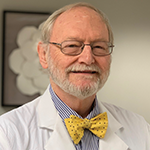The Foundation is also encouraging educators to find innovative ways to provide a high-quality clinical educational experience for students and residents and build interest in rheumatology. “We have a very innovative and unique program funded and administered by the Foundation,” says Dr. Daikh. “The Clinician Scholar Educator Award is a three-year grant, providing funding for faculty interested in education. Within that grant is a lot of protected time to do teaching and develop new methods for medical education. It has been very successful.”
Staying in Touch
If a connection is made, it can be important to keep in touch with the student through the rest of their school career. Let them know the physician can be contacted if they have any rheumatology questions as they go through other rotations. If appropriate, offer to write letters for their residency.
“When I work with students, I am not really trying to recruit them,” says Dr. Brasington. “I try to explain a process that they probably don’t know a lot about. I am mostly trying to get their attention to consider rheumatology as their specialty.”
Often, this question boils down to the individual physicians and how they portray their specialty to the students.
“One of the things that really matters is that over the last 20 years or so, rheumatologists have become more enthusiastic about the field, and I think it shows,” says Dr. Brasington. “I think enthusiasm is important, and it certainly gets the attention of students.”
Kurt Ullman is a freelance writer based in Indiana.
Workforce Outlook: What the research said
Objective: To develop and apply a model that allows prediction of current and future supply and demand for rheumatology services in the US.
Methods: A supply model was developed using the age and sex distribution of current physicians, retirement and mortality rates, the number of fellowship slots and fill rates, and practice patterns of rheumatologists. A Markov projection model was used to project needs in 5-year increments from 2005 to 2025.
Results: The number of rheumatologists for adult patients in the US in 2005 is 4,946. Male and female rheumatologists are equally distributed up to age 44; above age 44, men predominate. The percent of women in adult rheumatology is projected to increase from 30.2% in 2005 to 43.6% in 2025. The mean number of visits per rheumatologist per year is 3,758 for male rheumatologists and 2,800 for female rheumatologists. Assuming rheumatology supply and demand are in equilibrium in 2005, the demand for rheumatologists in 2025 is projected to exceed supply by 2,576 adult and 33 pediatric rheumatologists. The primary factors in the excess demand are an aging population, which will increase the number of people with rheumatic disorders, growth in the Gross Domestic Product and flat rheumatology supply due to fixed numbers entering the workforce and retirements. The productivity of younger rheumatologists and women, who will make up a greater percentage of the future workforce, may also have important effects on supply. Unknown effects that could influence these projections include technology advances, more efficient practice methods, changes in insurance reimbursements, and shifting lifestyles. Current data suggest that the pediatric rheumatology workforce is experiencing a substantial excess of demand versus supply.
